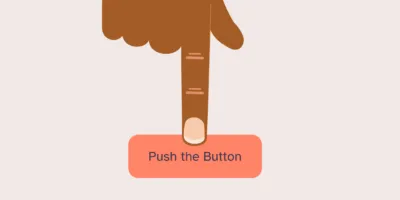14 Apr 2023
Essential reading for meaningful, sustainable, humanity-centred design

Our recommended reading list features important authors who are leaders in the areas of meaningful, sustainable, humanity-centred design.
-
Anna Boscoe
User Experience Content Specialist
Anna Boscoe
Last week saw the publication of ‘Design for a Better World’ by Don Norman, who coined the term ‘User Experience’ and is commonly viewed as a veteran of the industry. The book covers themes such as sustainable design, humanity-centred design, design justice, and disrupting our traditional economic measures that are based solely on financial growth.
I’m sure many of us in the industry will pick up a copy of Don’s book. However, if you work in the field of UX you’re probably aware of the controversy surrounding this release in recent weeks and it’s important to recognise that these are not entirely new topics and ideas
At cxpartners, we are on our own learning journey – developing our understanding and our practice with these approaches in mind to help create a more equitable, inclusive and sustainable future for all. We believe it’s important to give some alternatives to Don’s book and raise the profile of authors who have been focused on these topics for many years, and so our practitioners have compiled a recommended reading list from leaders in these areas.

1. ‘Design Justice: Community-Led Practices to Build the Worlds We Need’ by Sasha Costanza-Chock
This was a recommendation from our recent Power and Privilege training, designed and facilitated by Clara Greo and Sonia Turcotte, which we also highly recommend.
The book explores the concept of ‘design justice’, an approach that challenges structural inequalities by ensuring that design is led by the historically marginalised communities most impacted by the service or the product being created. The book documents real-world community-led design practices grounded in social movements and connects design to broader struggles for collective liberation and ecological survival.
2. ‘Decolonizing Design: A Cultural Justice Guidebook’ by Elizabeth (Dori) Tunstall
Decolonizing Design explores how modernist design has excluded and oppressed Indigenous, Black, and People of Colour communities. Tunstall uses real-life examples and case studies to show how design can address these harms by recentring its theory and practice in global Indigenous cultures and histories. The book demonstrates how we can transform the way we imagine and remake the world, replacing pain and repression with equity, inclusion, and diversity.
3. ‘Designs for the Pluriverse: Radical Interdependence, Autonomy, and the Making of Worlds’ by Arturo Escobar
In Designs for the Pluriverse, Escobar proposes a new vision of design theory and practice that prioritises justice and the environment over capitalist and modernising aims. He argues for the development of ‘autonomous design’ that takes into account questions of environment, experience, and politics, and is based on the radical interdependence of all beings. By mapping design principles to the history of decolonial efforts in Latin America, Escobar shows how refiguring current design practices could lead to more just and sustainable social orders.
4. ‘Beyond Sticky Notes: Co-design for Real: Mindsets, methods and movements’ by Kelly Ann McKercher
Although many people talk about co-design, it is rarely practised authentically. Beyond Sticky Notes teaches you what co-design is and how to do it. It provides practical tips, diagrams, and frameworks to help you work together with others and genuinely share power. Whether you’re new to co-design or have experience, this book will guide you through the key principles and methods of this approach.
Inclusive design is a key focus for us, and this book has become essential reading in the past year or so as we’ve begun to shift our thinking towards more participatory methods. It is a handbook for participatory design, full of methods and guidance. However, what has really shifted our perspective is the work on the mindsets required to create fairer services.
5. ‘Doughnut Economics’ by Kate Raworth
Can we really design sustainably without looking at the economic and business models that underlie the products and services we create? The demand for exponential growth and monetary gain for stakeholders often takes precedence at the expense of people and the planet. In Doughnut Economics, Raworth identifies seven ways in which economics has gone astray and proposes a new economic model that meets the needs of all within the means of the planet. This model includes metrics around health, well-being, and the environment. Raworth’s book promises to reframe and redraw the future of economics for a new generation
6. ‘The Intersectional Environmentalist: How to Dismantle Systems of Oppression to Protect People + Planet’ by Leah Thomas
Although this is not design related per se, The Intersectional Environmentalist is an essential read for any practitioners who also consider themselves activists or change makers. This book is a call to action for creating meaningful, inclusive, and sustainable change for the betterment of the planet and all people. Coined by Leah Thomas, ‘intersectional environmentalism’ highlights the link between climate change, activism, racism, and privilege, emphasising that the fight for the planet should go hand in hand with the fight for civil rights. The book features the expert voice of Thomas and the words of young activists from around the world.
We always want to continue learning and expanding our knowledge. We would love to hear if there are any other books that you feel are must-reads on these subject areas. Let us know on LinkedIn!
––––––
Thank you to Claire Barrett, Stuart Tayler, Nicola Pritchard and Mark Skinner for their contribution to this list.





